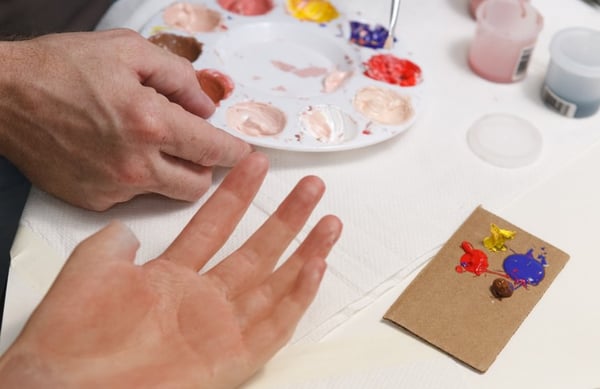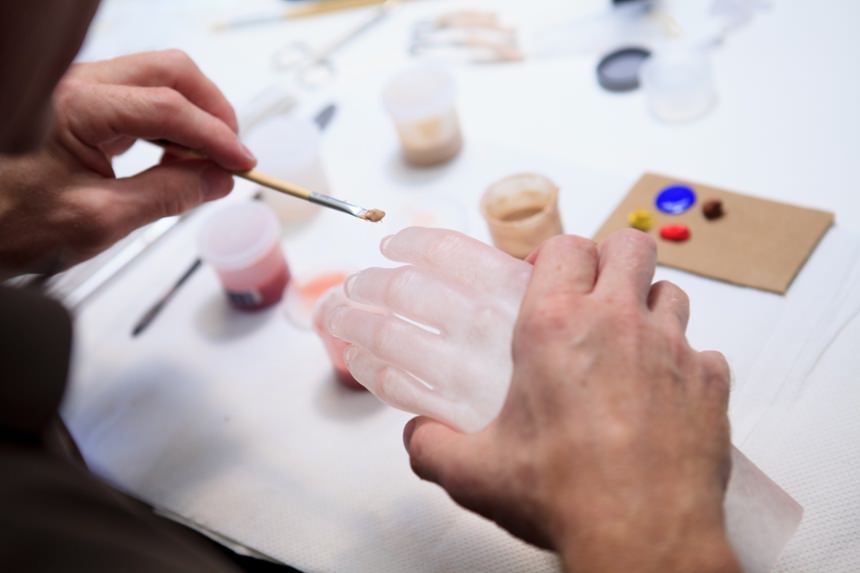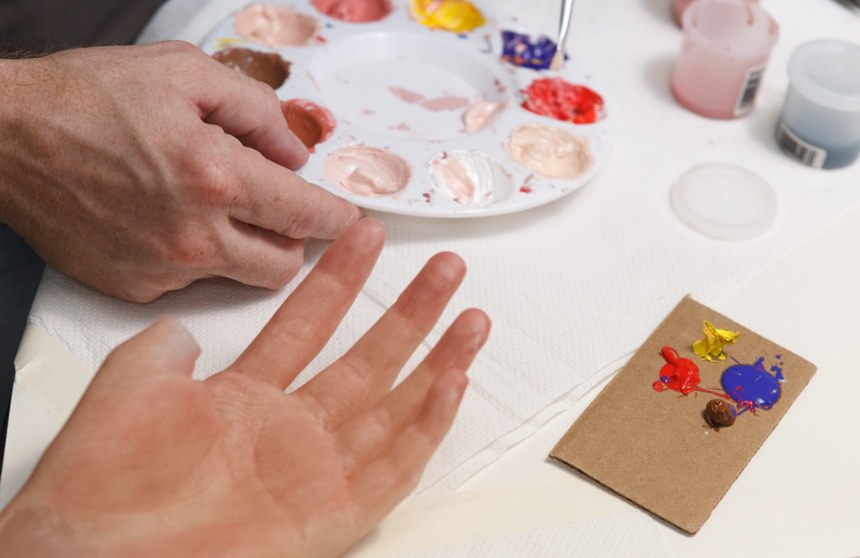There is currently no way to replicate the full dexterity and speed of the human hand. There are many myoelectric devices that get quite close. But if you are looking to replicate the look of the human hand — that technology is already here.
Passive silicone restorations, also sometimes called cosmetic prostheses are passive prosthetic devices. They are called passive because they do not have active movement, unlike both body-powered and myoelectric devices. In the picture above, you can see our patient Diana with the artist working on her restoration.
These devices are made from a clear silicone glove shaped to match in high detail the non-affected hand and they can including wrinkles, veins, knuckle definition and fingernails. The clear silicone is then painted by an artist to perfectly match the individual’s existing skin tone, body hair, freckles, and other natural features — tattoos and other unique artwork can also be included for even greater individual expression. You can see the work in this video:
If a patient has decided that a passive silicone restoration is what would help them best achieve their goals, we start the process with a series of impressions of the affected and non-affected finger, hand or arm. Next, we work with expert artists who sculpt a missing body part to match the person’s sound hand or arm.
The silicone is modeled to match the sound hand:

Our artists painstakingly add colors and fingernails and wrinkles until:
These types of restorations are available for amputations as small as fingertips:
Or for as much as shoulder amputations. In the photo below, Diana’s entire right arm is a custom silicone restoration. You can watch Diana’s journey with us in her video, and learn more about the silicone process.
There are also prostheses available that are not custom painted, but can match the users skin tone and size. These are a less expensive option. Some single-motor myoeletric hands can offer movement and look similar to their sound hand.
There are several advantages to having a passive silicone restoration. Having an arm/hand/finger that looks similar to the person’s sound body part can provide psychosocial benefits to the user — that is, can help them feel more at peace with their limb difference. This can be especially helpful to those who have lost part of their upper arm in a traumatic way. For anyone with a limb difference, it can improve their confidence to be out in public, and help with their overall personal body image. It can help the individual feel more “whole” and take the pressure off going into public with a prosthesis that is more obviously a device.
In addition, these prostheses are lightweight and do provide some level of function. They may improve a person’s abilities by providing a surface for stabilizing or carrying objects.
These devices can also help provide symmetry to the individual’s body. Having a prosthetic device can add length to the affected arm or hand and help return the individual to something approaching anatomical normalcy. This can help in balance for the person if they have a higher amputation, and the biomechanics of grasp at the partial hand or finger level difference. The device can also provide protection for the affected body part — residual limbs often experience various levels of sensitivity and do best with a buffer between them and the hazards of daily life.
Two other advantages: often harnesses are not required, unlike many body-powered devices; and there are no batteries to charge at night like myoelectric devices.
As opposed to off-the-shelf gloves or coverings that can result in an “uncanny valley” perception by others, these fingers, hands and arms look impressively realistic. Despite their realism, they do not move or feel like an anatomical limb and that can result in a surprise for an unwitting stranger who reaches out to touch or shake a hand. However, you are in control and can reach out your other hand or confidently provide your prosthetic hand with a smile and explanation that you have an amazing and very realistic prosthesis — it is literally a wearable work of art!
The advantages that we listed above, for many people, are more than reason enough to pursue a passive silicone restoration. If you would like to learn more about this type of prosthesis and how we can help you with our years of expertise, please contact us. If you have experience with this prosthesis that you would like to share with your peers, please leave a comment below.










%20President%20and%20Senior%20Clinical%20Director.jpg?width=600&height=600&name=John%20M.%20Miguelez%2c%20CP%2c%20FAAOP(D)%20President%20and%20Senior%20Clinical%20Director.jpg)










Comments (10)